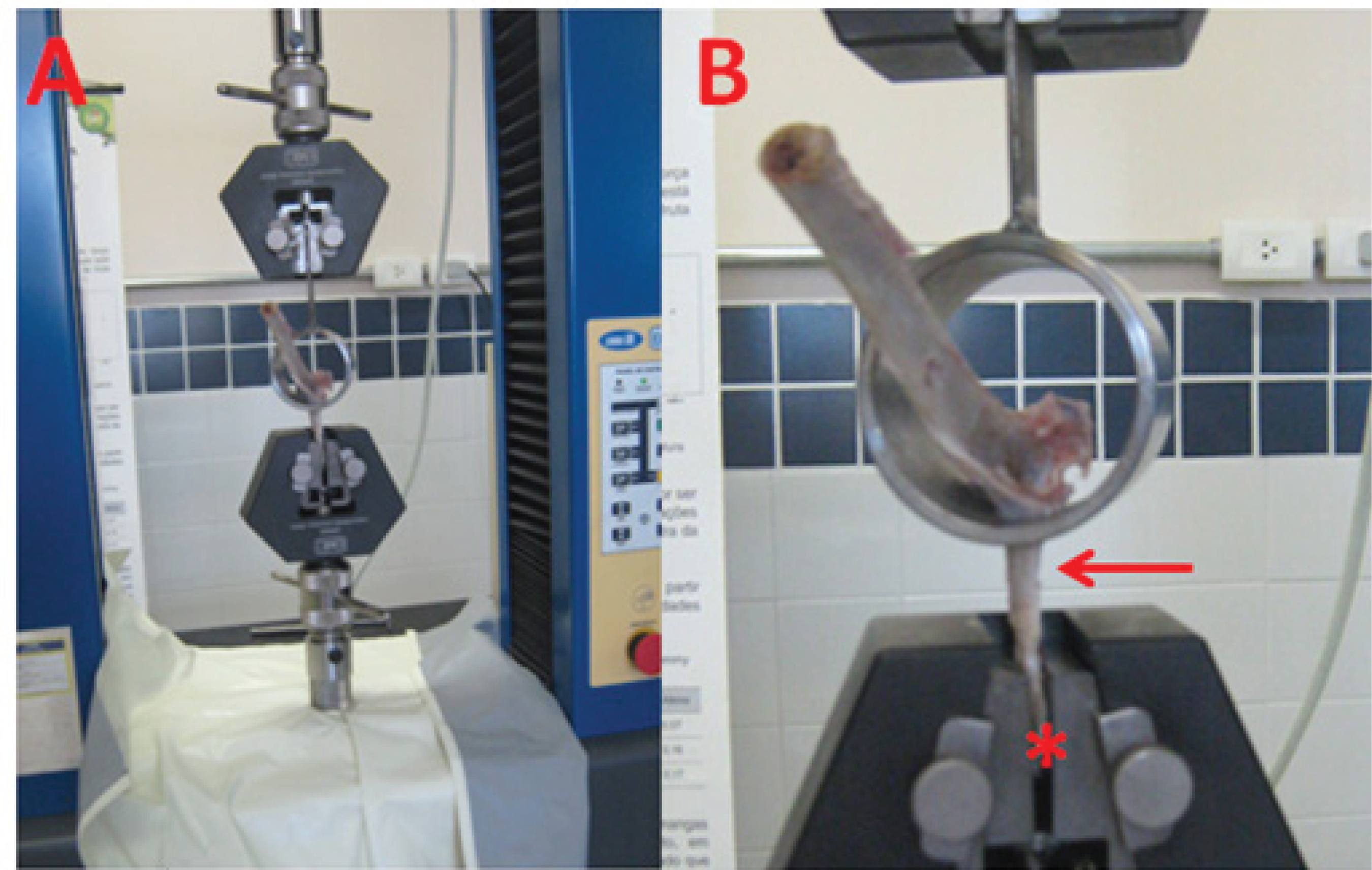Abstract
The biomechanical study of articular ligaments generate subsidies for research of biomaterials or treatment techniques for replacement or repair of these structures on the occasion of rupture or degeneration. Therefore, We carried out a biomechanical traction assay of the patellar ligament in 53 dogs, totaling 106 patellar ligaments, determining maximum resistance in Newtons (N) and deformation in millimeters (mm). These data were correlated to body biometrics of the dogs used. The strength of the left and right patellar ligaments in the female group were 642.6N ±297.2N and 627.0N ±300.6N (p=0.028), respectively. Males presented higher values (p=0.035). The right patellar ligament had a maximum capacity of resistance of 850.8N ±299.9N, and the left one of 729.3N ±283.5N. Statistically, there is no significant correlation (r> 0.7) between the biometric parameters measured and the bodily strength or deformation of the patellar ligament. Despite no statistical significant correlation, data from the strength and deformation of the canine patellar ligament can support further research aimed at correcting ruptures of joint ligaments.
Keywords:
knee; patellar ligament; resistance

